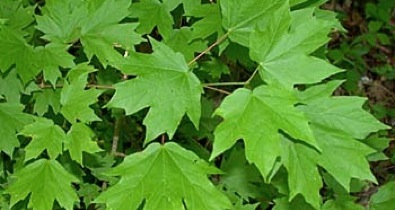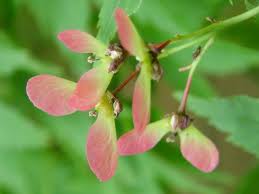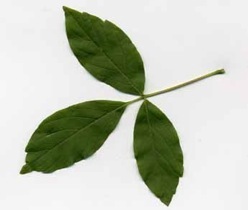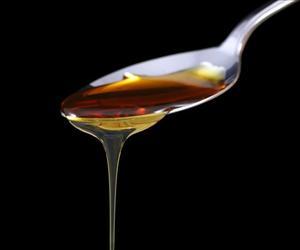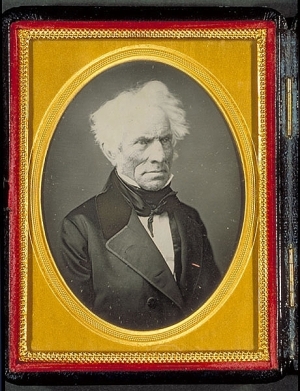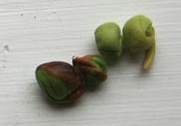Maples: How Sweet It Is
It’s amazing what you can do with two trees and a cow: Maple walnut ice cream. It was the prime ice cream of choice when I was young. It can still be found regionally, sometimes, and never overseas. Then I have to settle for chocolate ice cream, another marriage between bovine and bark.
While maples are associated with colder climates, several species of maples grow in the South and at least four of them in Florida, two of them reportedly better for making syrup than the famous sugar maples of Vermont.
To anyone who grew up in northern climes, finding maples in Florida is a bit of a challenge because they aren’t the huge, craggy trees of up country. But, they are here; shorter, thinner, but just as welcoming to the forager. With one exception They all provide the same edibles: Sap, seeds, inner bark and sweet young leaves. (You did know there was more to the maples than syrup.)
The four maples commonly found in Florida include the Florida Maple (Acer floridanum AY-ser flor-i-DANE-um) sugar maple (Acer saccharum AY-ser sack-uh-RYE-num) red maple (Acer rubrum AY-ser ROO-brum ) and the Box Elder (Acer negundo AY-ser nuh-GUHN-doe) with the first and last lauded for sugar production. There may also be a smattering of other maples as well, such as variations on the Southern Sugar Maple, the Chalk Maple and assorted imports such as Japanese maples. In usage, most maples are the same, no matter where they are.
The most famous maple product is maple syrup. I never “sugared” as a young man but I had a neighbor who did, Bill Gowan, and I helped him often. He had about a dozen sugar maples, and seven kids to feed. He also heated and cooked with coal so there was always a hot kitchen stove to boil the sap down to syrup, a 30-to-1 reduction in a good year. Every spring for many years I helped him collect the sap, a daily ritual that including emptying buckets brimming with the clear liquid. Inside the kitchen his wife, Maxine nee Lambert, kept a huge two-burner copper pot boiling all day long to reduce the sap, leaving their house very humid. For my labors I always got a quart of fantastic home-made maple syrup. That on buckwheat pancakes was probably as close to gastronomic heaven as I will ever get.
All the maples will produce sap for sugaring, but they vary in amount and quality. The odd-man-out maple, one that does not look like a maple, is Acer negundo, the Box Elder. It was more esteemed than the sugar maples and was a major source of sugar in the South. In fact, until sorghum and sugarcane were cultivated maple trees were the main source of sugar in the New World. Somehow Europeans never discovered how to tap their own maples. Distilling the sap is a dissertation unto itself. Box Elder seeds are NOT edible They contain hypoglycin A, the same toxin that’s found in Ackee.
Regardless of species — there are over 200 including Birch, Hickories, Sycamore and Ashes — tapping trees is done the same way. You either bore a small hole into the foot-wide or more tree, on an upward slant, and tap in a hollow spigot. Another way is driving in a half-tube metal spigot. Driving the metal spigot makes enough of a wound to get sap without drilling a hole. A bucket is hung from either tap and collects the sap. At the end of the season the tap or spigot is removed. Drilled holes are filled with a hardwood dowel. Next year you tap in a different spot.
Next on the list of maple edibles, in nutritional terms, are the winged seeds, actually samaras. To eat them you removed the wings and then parch, roast or boil them. Each winged helicopter pair produces two seeds. You can also eat them raw and should try one first. If it is bitter you can leach the seeds to reduce the bitterness. If they don’t taste good, take heart. Like acorns, they can vary tree to tree so try another one if they are not palatable. Again the seeds of the Box Elder (Acer negundo) are toxic.
The inner bark, the cambium, is next on the maple nutrition list, the same bark that delivers the sap. It can be eaten raw, boiled or roasted. Indians also dried it then pounded it into a powder, as they did inner barks of several trees including pine. Left over fiber can be sifted out. Lastly, young leaves can be eaten raw or cooked. They are sweet and delicate. But like all greens, provide the least amount of nutrition. By the way, dry or hwited red maple (Acer rubrum) leaves are toxic to horses.They can have pyrogallol which inhibits the ability of red blood cells to carry oxygen.
Acer is the Dead Latin name for the Maple and literally means “sharp” perhaps because it was used to make spears and lances. Floridanum means Florida. Rubrum means red. Saccharum, sweet, and Negundo, which is from the Sanskrit word nirgundi which literally means “that which protects the body from diseases.” The Box Elder maple did not get that name because it was good at reducing disease but because it resembled another plant that does, the Vitex negundo. The word “maple” started out as mapulder in Old Saxon then mapultreow in Old English then mapel in Middle English.
Maple Beer
The following was written by botanist F. A. Michaux, left, in 1853, in his book “North American Sylva.” “Upon four gallons of boiling water pour one quart of Maple molasses [syrup] add a little yeast or leaven to excite the fermentation, and a spoonful of the essence of spruce: A very pleasant and salutary drink is thus obtained.” Francois is the son of Andre Michaux, also a famous botanist, and for whom Gopher Apples got their botanical name, Licania Michauxii. Many Internet amateurs get the two botanists confused and say the photo at the left from 1851 is of the senior Michaux. Don’t think so. The senior Michaux died in 1802 some 20 years before the first photograph was made. To see a younger rendition of Francois read Gopher Apples.
To collect seeds run your hand down the branch stripping them. One at a time peel off the outer skin, what we called the “whirlygig” when I was a kid. Cut the end and squeeze out the seed. There is a seed on each “wing.” They resemble peas or beans. Taste some seeds, if they are not bitter enjoy them raw, or roast them, or even boil them. If they are bitter — that varies with species and when harvested — you will need to leach them like acorns either soaking in several changes of cold water or cooking in boiled water. To roast seeds put them in a 350 F oven for 10 minutes or less. You can also dehydrate the seeds. Roasted or dry seeds can be ground into flour. Don’t eat the Acer nugundo seeds.
Green Deane’s “Itemized” Plant Profile
IDENTIFICATION: There are two groups of maples. One usually has opposite leaves, lobed, think Canadian Flag. The others have alder shaped leaves, ovals often with teeth. The leaves of the Box Elder can be green and white mixed.
TIME OF YEAR: For sugaring and collecting inner bark, the spring with warm days and cold nights. Seeds in the late winter/early spring, young leaves when ever present, best in spring. Bark as needed. Here in Florida maples can be seeding in late December to early January. Much later in the spring farther north.
ENVIRONMENT: Southern maples like damp, moist soil, river banks. I know several that grow in the Wekiva River swamp. In northern climes, on forested hill and mountain sides.
METHOD OF PREPARATION: Sap has to be boiled to reduce it 30 to 50 times, seeds raw, parched, roasted or boiled without wings. Taste first for bitterness. Inner bark dried, pounded, then cooked. You can eat the wings if you don’t want to remove them but they cam be bitter and hard to digest.
HERB BLURB
Native American Indians used an infusion of maple bark to wash wounds, treat back or limb pains, hemorrhoids, postmenopausal ailments and as a vaginal wash.

